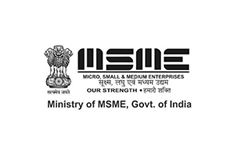Let’s talk about how we write.
Emails, websites, messages, presentations, it’s all communication. And how we say things really matters. Words can include or exclude as they shape how we see each other. They shape how we feel and what we do.
Why inclusive language matters
Inclusive language is about being accurate, respectful and open. It’s not about being “politically correct”. It’s about treating people like people.
We all have different identities. Different ways of seeing the world and different ways the world sees us. The way we talk about gender, race, disability, age, class, and so much more, it all sends a message. Using inclusive words helps people feel welcome and also helps us act in more inclusive ways, too.
Accessibility is part of this
It’s not just what we say. It’s how we say it.
Think about this:
How we write an email.
How we create a slide.
How we interview someone.
Every bit of that can help (or hurt) accessibility.
Many people interact with content in different ways:
- Some use a mouse.
- Others use voice control or a screen reader.
- Some are tired or distracted.
- Some are blind, d/Deaf, autistic, ADHD, or dyslexic.
Accessible writing helps everyone.
What not to assume
Don’t assume everyone clicks, taps, or scrolls.
Don’t assume everyone sees the screen.
So instead of saying:
“Click here”
Try: “Select this option”
It’s simple. But it helps more people understand and use your content.
Real talk: Why this matters for copywriters
If you write anything, ads, websites, apps, newsletters, you need to think inclusively.
Here’s a quick list:
|
Instead of… |
Try… |
|
“Click here” |
“Choose this link” or “Select this option” |
|
“See above” |
“This chart shows…” |
|
“Ladies and gentlemen” |
“Everyone” |
|
“Normal” |
Be specific—say “non-disabled” or “neurotypical” |
These swaps remove barriers. They make content easier for everyone.
Inclusive copy is better copy
It’s not just a “nice to have”. It’s good UX. It’s smart design. And it’s the right thing to do.
Good copy meets people where they are. It respects different ways of thinking, moving, seeing, and understanding.
That’s what makes it great.
Some tips to remember
1 – Use verbs, not nouns
Instead of:
“We’ve completed a review of your application.”
Try:
“We’ve reviewed your application.”
Notice how it’s shorter, clearer, and more direct? That’s the power of verbs.
2 – Use active, not passive, sentences… by monkeys
Just add “by monkeys” to the end, if the sentence still makes sense, it’s passive.
For example:
“If the report isn’t submitted by noon, it will not be reviewed… by monkeys.”
“If the report isn’t submitted by noon, we will not review it.… by monkeys.”
✘ Doesn’t work – it’s active.
Using the active voice helps your writing sound confident and clear.
3 – Avoid ableist language
When referring to someone with a disability, put the person first—not the disability.
So instead of:
“disabled person”
Write:
“person with a disability”
or
“person who has a disability”
This approach respects identity and avoids defining someone solely by their disability.
Writing inclusively isn’t about getting it perfect. It’s about getting better. Be mindful. Be open. And keep learning. Every word is a chance to include someone.












No Comments on Inclusive copywriting: Small words, big impact